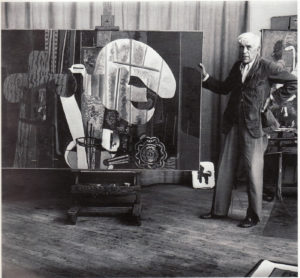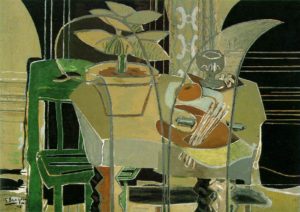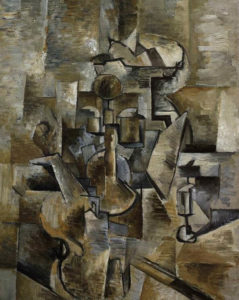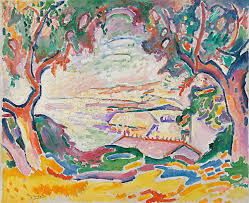Dear Artist,
Back in 1978 Colin Martindale of The University of Maine put some electrodes on some students’ heads and made an art-shaking discovery. Subjects were asked to create stories while the electroencephalogram recorded their brain waves. Creativity, he found, had two main stages — with vastly different types of waves. He called the two stages “inspiration” and “elaboration.” While stories were being dreamed up, brains were surprisingly quiet — mostly alpha waves indicating a low level of cortical arousal. It was the same sort of activity that’s often found in sleep, dreaming or rest — which could explain why sleep and relaxation can help people to be creative.
However, when these quiet-minded people were asked to “work on their stories” their brains became suddenly busier — flashing messages back and forth between lobes. Vastly more connectivity, focus, corralling and organization appeared to be going on. Martindale found that the people who had the most creative storylines also showed the greatest contrast between the two types of brain activities.
Many creative folks know about this. But it’s been my observation that about 20% of artists never get into the second stage at all. Without this cortical shift they short-change themselves. The question becomes how to set yourself up to enter the high-buzz mode. Here are a few parallel, creativity-rich modes that might surprise you:
Lackadaisical boredom mode
Sublimated anger mode
Dreamy love mode
Deadline mode
Relaxed time-off mode
Automatic joy mode
Careless abandon mode
It’s in this “abandon” mode that you can actually feel the brain change. Your tools quicken and they begin to run the show. The mind seems to think ahead, or giddily moves somewhere else. Some artists need a small change of location or posture to go into this elaboration stage. It may also take a trigger — music, memory, pressure, subconscious lapse. Or it may simply happen when the first mode has gone on long enough to play out and let the high-buzz mode begin. Ideally, as in a hybrid vehicle, the power is constantly shifting back and forth to whatever is appropriate and needed at the time.
Best regards,
Robert
PS: “Less-creative people can’t shift gears. Very creative people move between these two states intuitively.” (Guy Claxton, psychologist, University of Bristol, UK)
Esoterica: Artists who try to monitor their high-buzz modes often report going into overdrive when the work itself really starts to engage and to win them over. Getting further interested and getting excited replaces the more calculated and cerebral preparatory period. Martindale was one of the first to locate high-buzz creative action on the right side of the brain. He was also one of the first to notice that the most inventive creativity happens when both sides interact freely.
 This letter was originally published as “The high-buzz mode” on February 21, 2006.
This letter was originally published as “The high-buzz mode” on February 21, 2006.
Have you considered a Premium Artist Listing? With each letter, an artist is featured at the bottom of this page. The Premium Artist Listings are a means of connecting artist subscribers through their work. Proceeds from each listing contribute to the production of The Painter’s Keys.
“Painting is a nail to which I fasten my ideas.” (Georges Braque)
Featured Artist
Candace studied at the Ecole des Beaux Arts in Angers, France but it is her travels in the deserts of Africa and Oman, Antarctica and the Arctic, and sacred sights of Machu Picchu and Petra that serve as her true place of learning. A desire to combine these experiences with a deeper understanding of her own spirituality has provided the underlying focus and inspiration for her paintings.








8 Comments
Can hardly wait to get to the careless abandon mode again.
Interesting that scientists can read our minds and explain all those modes that we are addicted to as artists. It took me a long time to learn to not give up on paintings when I hit the walls of “ugh”, not realizing it was just a stage I had to keep working through. Lot’s of careless abandon and dreamy love in the beginning, a honeymoon phase. Then the labour of having to work and think would hit. I often have thought of how making art is like a relationship with time. In the beginning delirious love and feeling like nothing can go wrong, then reality hits with the battles of having to compromise and work through the problems, to a settling into a warm self confident stability from arriving at a place of self satisfaction from not giving up. Whatever the modes are, they keep us going back for more.
Thanks, Sara, very interesting. 2 nights ago I was relaxing in the evening and a resolution for part of a painting kind of evolved for me, mentally. About half an hour before I wanted to go to bed, I wandered into my (home) studio to look at the work. I had an urge to act on this resolution, and did so. I could feel my brain kick into gear and as I started I thought, well, you won’t be falling asleep easily now. Your mind is cranking and it will take time to turn it off! Spoiler: resolution worked out great, took a very long time to fall asleep.
Love your story Kristen and the resolution! I hope you managed a nap the next day.
I sure get it, that blast of resolution, often at inconvenient times like before bed or just before I need to leave to go somewhere. Also that burst of energy in the morning to see the results what I had done the night before! So great and addictive!!!
To me, the Careless Abandon mode can last for a few seconds, more or less. It is important to recognize it for what it is.
That small, or larger, space of time to make things happen beyond our conscious intention. We take it for what it is worth in our daily work. Something good to be embraced, or something other to be embellished, at our peril. I doubt that Braque painted in those pants, maybe so.
Aside from what I call the creative and the critical modes, I wonder if others also have experienced this phenomena: Try to, in any way, keep track of how you are progressing and what your thinking is while you are working on your art. What happens?
A fine arts graduate encouraged me to “record my process”. I tried various ways, but the result was always the same, no creative results. I’ve come to see it as the critical/logical modes overpowering the creative mode into hiding. It’s been freeing in a way too, I don’t have to think about that any more. Maybe a bit more mystery will be good for my collectors.
I think one of the things that eventually turns people off from painting – or any creative activity I suppose – is that there is usually a great deal of drudgery involved. (It is work after all.) Though unpleasant, this seems to be the unavoidable precursor to Robert’s ‘second stage’ which usually comes to me late in the day when I’m getting tired and almost ready to finish. Suddenly it seems clear what needs to be done and how to do it.
It doesn’t happen every day but I’ll stick at it. (I’m 77.)